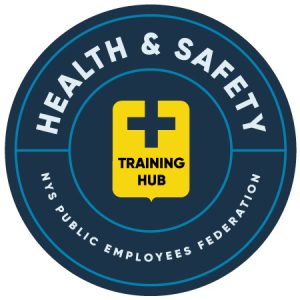 The PEF Health & Safety Department offers a wide variety of training opportunities for PEF members and Leaders. Training may include management, other bargaining units, various state agencies and/or any entities that will promote cooperation and understanding of H&S concerns in your workplace.
The PEF Health & Safety Department offers a wide variety of training opportunities for PEF members and Leaders. Training may include management, other bargaining units, various state agencies and/or any entities that will promote cooperation and understanding of H&S concerns in your workplace.
Workshops are conducted at members’ worksites, PEF Regional Conferences, Agencies’ Conferences, and online.
To sign up for online training:
- Register for a scheduled training as an individual participant,
- Be sure to sign up for PEF On the Move email notifications to receive training announcements – https://actionnetwork.org/forms/sign-up-for-email-notifications
- Ask your Local Steward or Council Leader to work with the PEF H&S Department to coordinate training for your Division, Health & Safety Committee, or your worksite.
- PEF H&S staff are available to attend membership or H&S Committee meetings to present on the trainings we offer,
- Talk to your Regional Coordinator about training opportunities.
PEF training programs are offered under direct funding, joint funding through the PEF/NYS Contract and a Training and Education Grant from the NYS Department of Labor. Learn more.
We Work with You
The PEF Health & Safety staff are here to assist you with your training needs. Trainings are offered both virtually and in-person, during the workday, at lunch and learns, or in the evenings. We work with your PEF representatives and State agencies to provide access and opportunity for training.
To learn more about what services the PEF Health and Safety Department offers, please contact us at HealthandSafety@pef.org or 1-800-342-4306 ext. 254 and a Health & Safety Specialist will assist you.
Trainings Currently Offered
Trainings are tailored to meet the specific needs of the group requesting them. If you do not see a program that meets your needs, please let us know and we will work with you and your PEF leaders to develop a suitable training.
